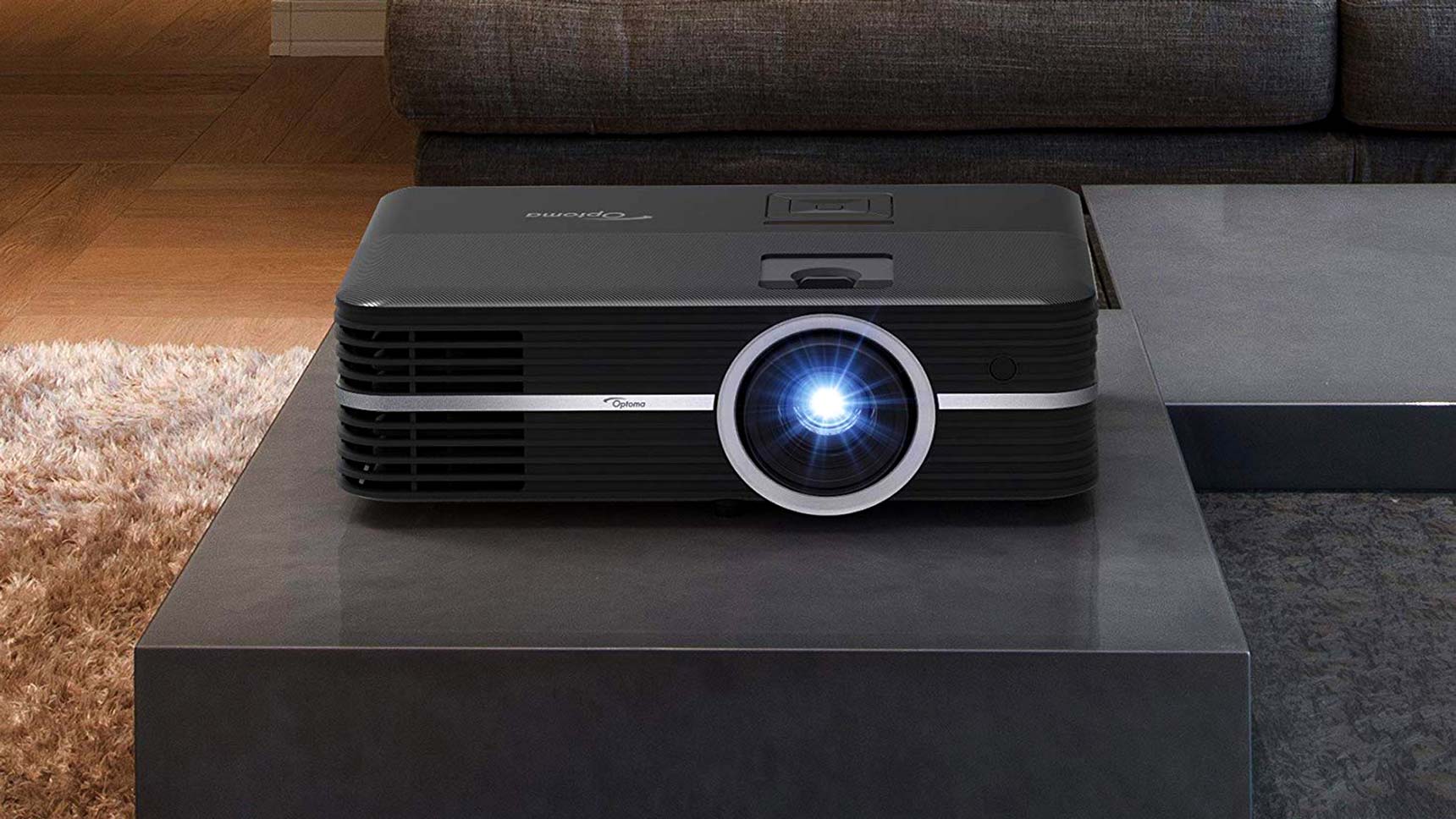If you want to take your gaming to another level, consider upgrading to a bigger screen. And no, we are not talking about 65-inch TVs or 34-inch curved ultrawide monitors. We are talking about projectors, which can easily produce a 100-inch display, with the option to customize the screen size.
While they are not the most ideal for competitive gaming due to their input lag, projectors are great for games such as The Witcher 3: Wild Hunt, God of War, Sea of Thieves, Shadow of the Tomb Raider, and Hellblade: Senua’s Sacrifice, among other titles. However, not all projectors out on the market will work great for gaming. Some are simply much better than others, offering a low input lag, a 1080p native resolution, and multiple HDMI ports for home consoles.
In this guide, we have compiled the best gaming projectors on the market, from short throw projectors to 4K projectors. All products listed here come with a high native resolution (either 1080p or 4K UHD) and at least one HDMI port. Furthermore, most of the products offer a game mode, which lowers their input lag to below 20 milliseconds, which is great for gaming.
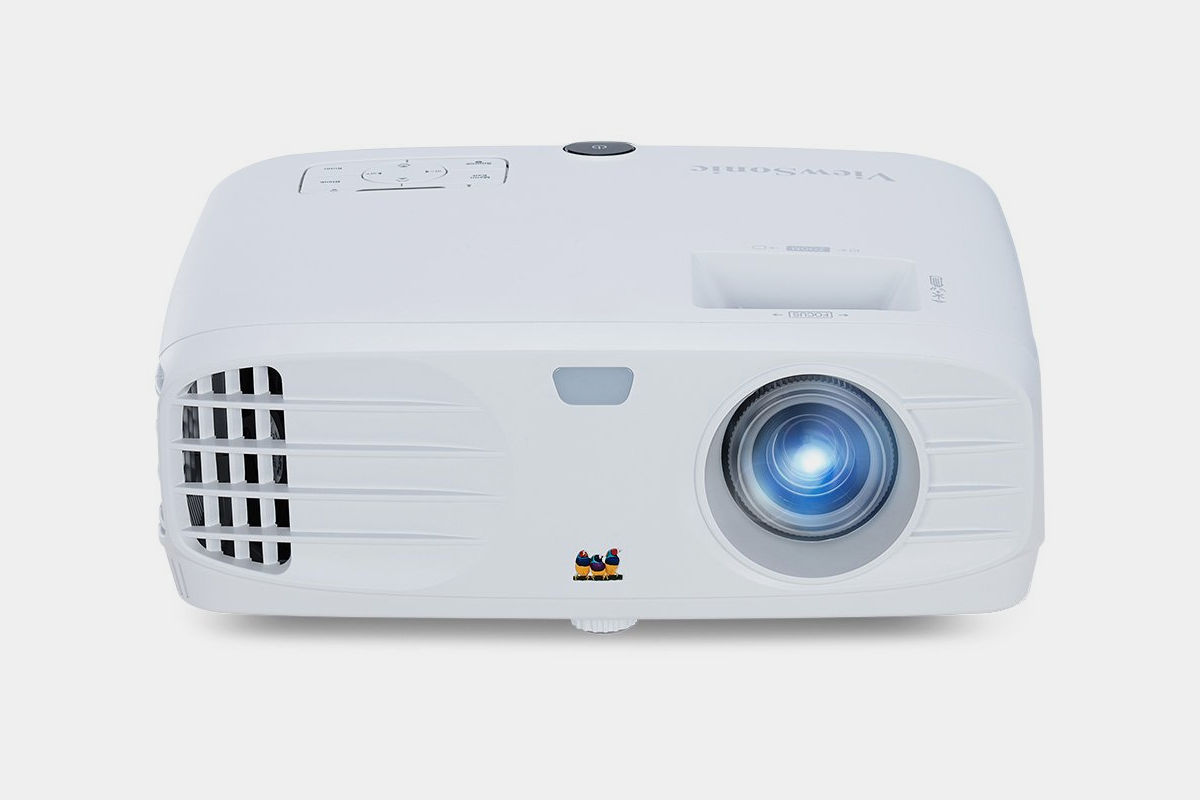 ViewSonic PX700HD
ViewSonic PX700HD
The ViewSonic PX700HD is a great option if you want to keep your expenses under $500. It’s not exactly a true budget option, but it’s more affordable than many of the products below. A DLP projector with a 1080p resolution and a 16:9 aspect ratio, this ViewSonic offering comes in a simple, all-white chassis with lots of input ports, including two HDMI ports and a VGA port.
With a brightness rating of 3500 lumens, the PX700HD is a versatile projector that works well even when there’s ambient light. It’s a standard throw projector, capable of producing a 100-inch display from about 11 feet. It has good color accuracy, a decent contrast ratio, and a low input lag of 16 milliseconds, which is great for gaming.
On the other hand, the built-in mono speaker is not very good and will disappoint you even if you already have a low standard when it comes to projector speakers. But other than that, the PX700HD is solid and is a great projector not only for gaming but also for home entertainment in general. If you like this product but prefer a short throw projector, consider the PX706HD instead.
 Optoma HD27HDR
Optoma HD27HDR
The Optoma HD27HDR is a long throw projector that offers outstanding value for the money, featuring a very low input lag, excellent contrast, and, as the model name suggests, HDR support. You can get it for just around $600-650, which is somewhat surprising consider everything it brings to the table.
Regarding input options, this Optoma projector offers fewer options compared to the ViewSonic product above, only offering two HDMI ports, though one of which is an HDMI-MHL port for smartphones and other mobile devices. But on the upside, it comes with a better internal speaker, which is rated at 10 watts. While not in the same league as external speakers, the mono speaker is acceptable enough if you game in a small room.
Capable of producing a 100-inch display from about 10-11 feet, the HD27HDR has great overall picture quality, with good color accuracy and very high contrast. The native resolution is 1920×1080 while the brightness rating is 3400 lumens. When set in gaming mode, the input lag drops to 16 milliseconds, although the input lag is still decent enough for regular gaming even when that mode is off.
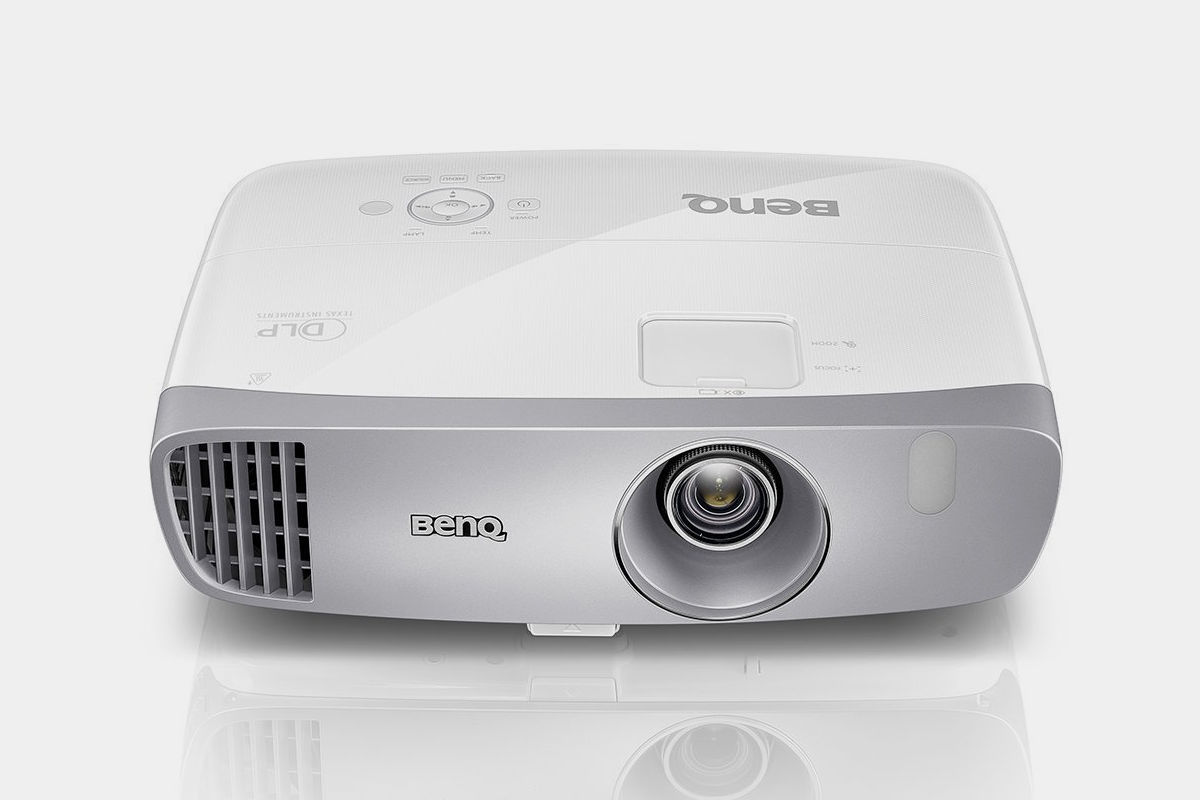 BenQ HT2050A
BenQ HT2050A
If your gaming setup calls for a projector with a slightly shorter throw ratio than a regular projector, check out the BenQ HT2050A, which can produce a 100-inch display from around 8 feet. It’s a DLP projector with a decent-sounding built-in speaker, multiple input ports, and vertical/horizontal keystone correction.
It has a 1920×1080 native resolution, which is perfect if you game on the base PS4, and a 2200 lumens brightness rating. Best used in a room with minimal ambient light, this projector has good picture quality, with good color accuracy and decent contrast, and is great for games such as Assassin’s Creed Odyssey, Uncharted 4: A Thief’s End, and Far Cry 5.
Like the previous two products, this BenQ product boasts a 16-millisecond input lag when set in fast mode, which will please those who love to play fast-paced games in which quick reactions are very important. Overall, it’s a great projector for gaming, whether you are into tactical RPGs and action games or real-time strategy and first-person shooter games.
You may also be interested in our list of the best affordable projectors under $200.
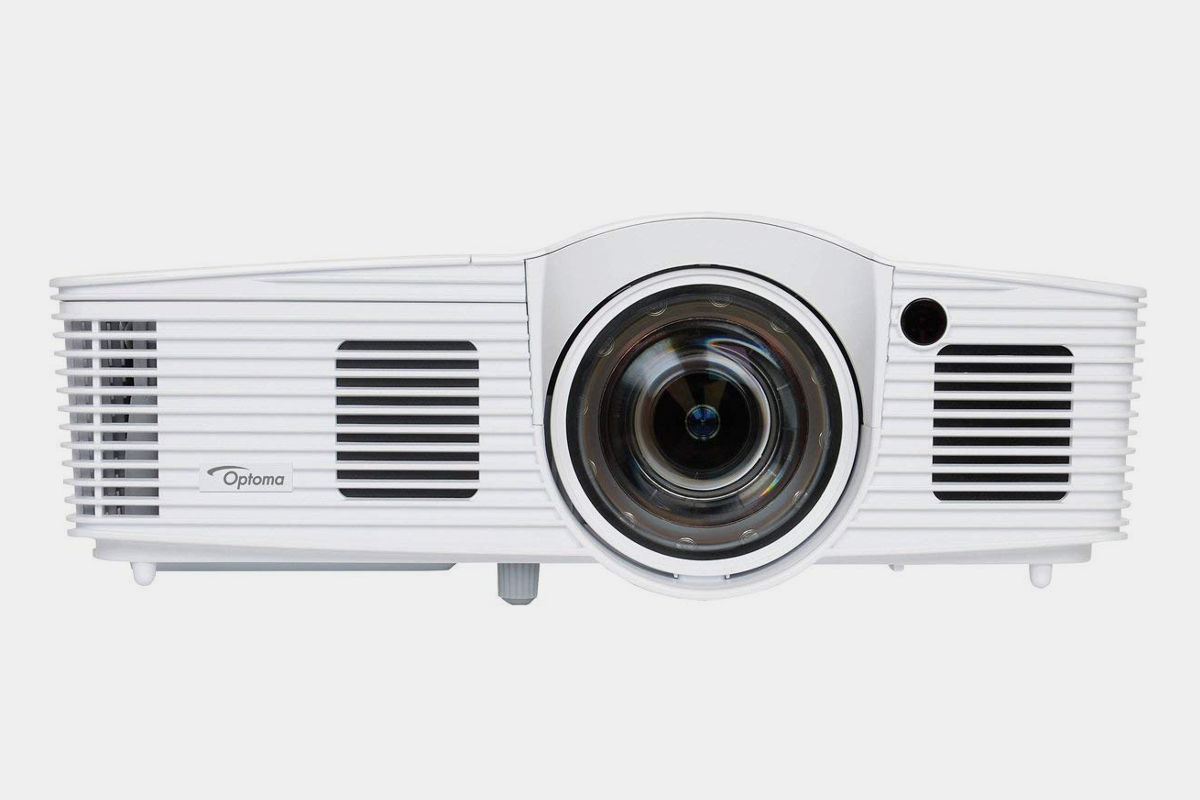 Optoma GT1080Darbee
Optoma GT1080Darbee
The Optoma GT1080Darbee is an excellent short throw projector for gaming. It can produce a 100-inch display from just around 3.5 feet, which is great if you have limited space. As the model name suggests, this projector has a native resolution of 1920×1080, translating to sharper images.
A DLP projector, the GT1080Darbee has a great contrast ratio – perfect for games with a lot of dark scenes, such as Resident Evil 7: Biohazard, Outlast 2, and Alien: Isolation. The color accuracy is good while the brightness rating (3000 lumens) is great, which makes for a versatile projector that can still produce clear images even when there’s some ambient light in the room.
When in normal mode, the input lag is unremarkable but still decent enough for casual gaming. If you want an even lower input lag, you can switch to game mode, which brings down the input lag to just around 16 milliseconds. Regarding inputs, this Optoma projector comes with a pair of HDMI ports, one of which is an HDMI-MHL port for mobile compatibility.
Take a look at some of the reliable portable mini projectors and pick your favorite.
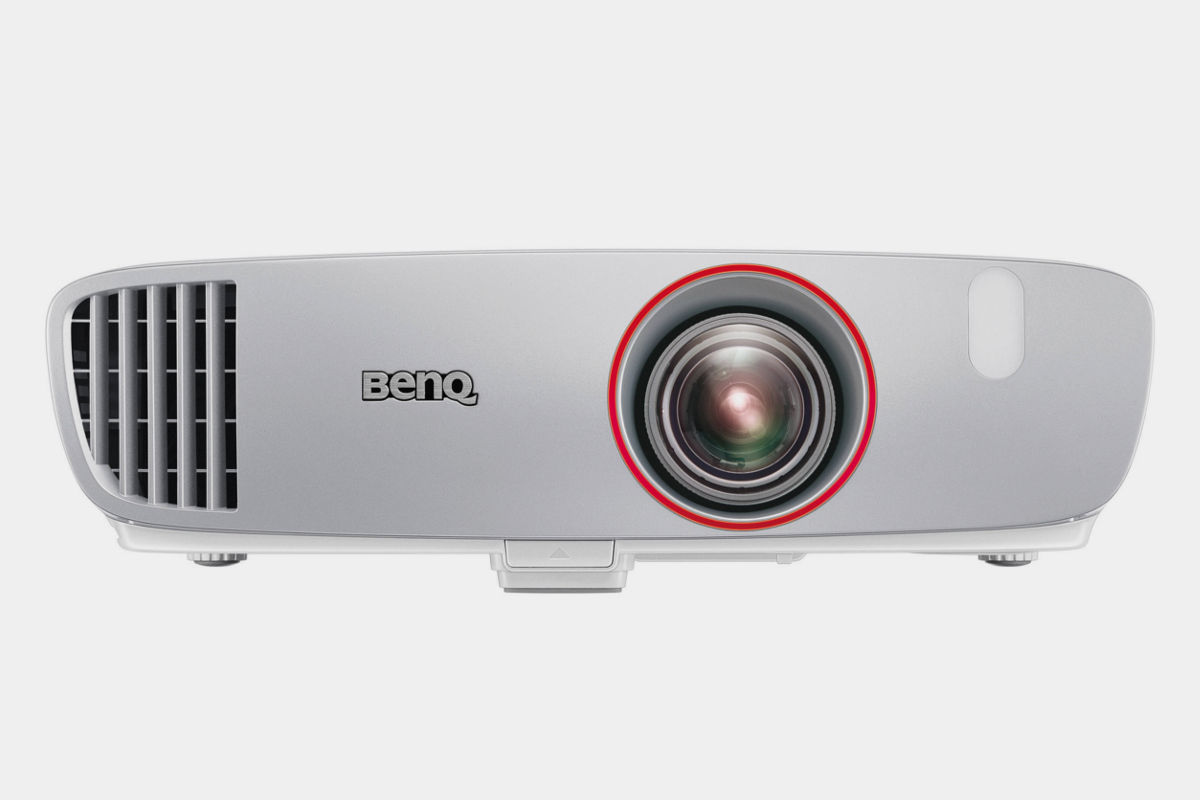 BenQ HT2150ST
BenQ HT2150ST
Often considered the most notable competition to the Optoma GT1080Darbee due to their similar performance and price, the BenQ HT2150ST is a short throw projector designed for home entertainment. It’s a great projector if you have limited space and usually game with the lights off. It comes with two HDMI ports for input and a surprisingly good built-in sound system.
Featuring a 1920×1080 native resolution, this BenQ product is a DLP projector with a brightness rating of 2200 lumens and the capability to produce a 100-inch display from around 5 feet. Granted, it’s not on the same level as the throw range of the Optoma GT1080Darbee, but it’s still very good.
Concerning overall performance, the HT2150ST is excellent. It has good picture quality, with a decent contrast ratio, and boasts a very low input lag (for a projector), with a 16-millisecond input lag when game mode is enabled. When that mode is turned off, the input lag is pedestrian, though some people will not be able to tell the difference.
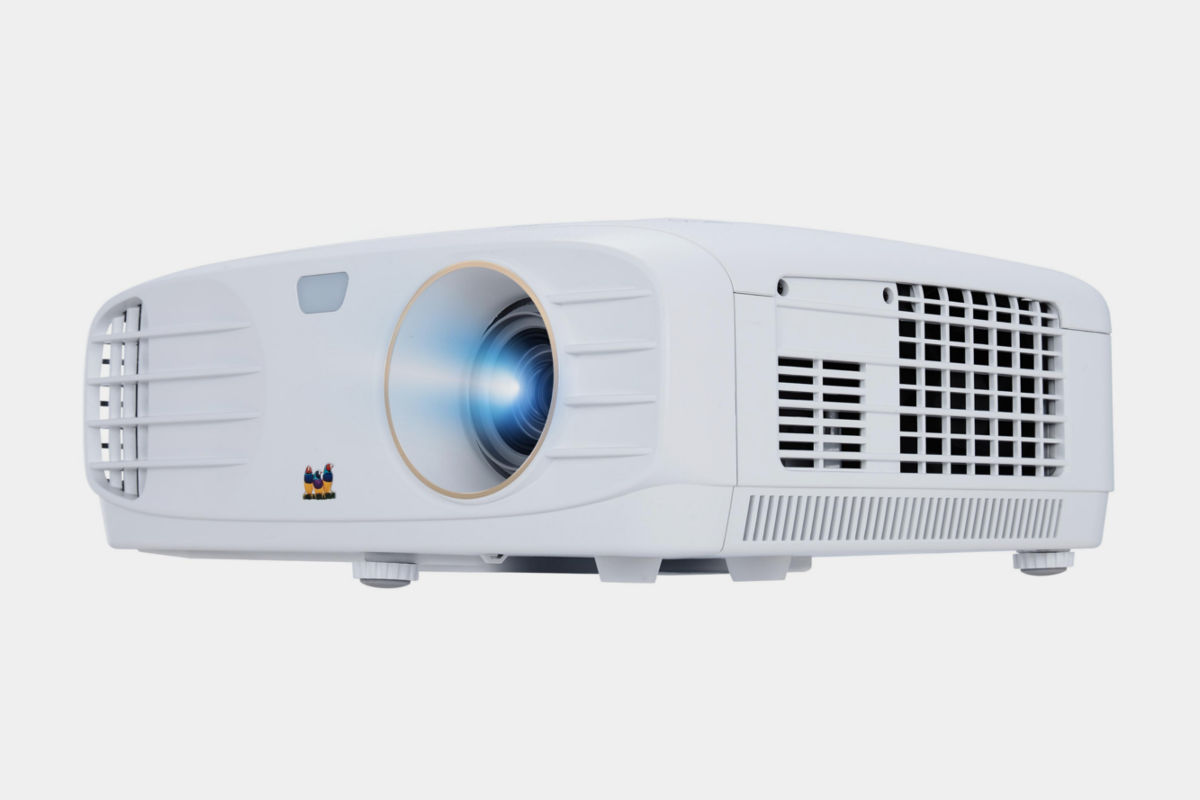 ViewSonic PX747-4K
ViewSonic PX747-4K
If picture quality is higher than input lag on your priority list, consider getting a projector with a 4K UHD resolution. The biggest roadblock in that route is the price of 4K projectors, with most products selling for well over $1,000. One of the more affordable offerings out there is the ViewSonic PX747-4K, which you can get for just under a grand.
A normal throw projector, the PX747-4K is a good 4K projector that offers HDR support for more vibrant images and multiple input ports, including HDMI and VGA. It’s got a decent-sounding onboard sound system, which might surprise some of you, and is easy to set up out of the box. It’s great for games such as Final Fantasy XV, Mass Effect: Andromeda, and Red Dead Redemption 2, featuring good color accuracy, decent contrast, and a high brightness rating (3500 lumens).
The input lag is around 43 milliseconds, which is one of the better input lags for a 4K projector at the moment. For regular gaming, that input lag won’t bother most people, but if you mostly play fast-paced first-person shooters and are coming from a gaming monitor, you will be able to tell the difference.
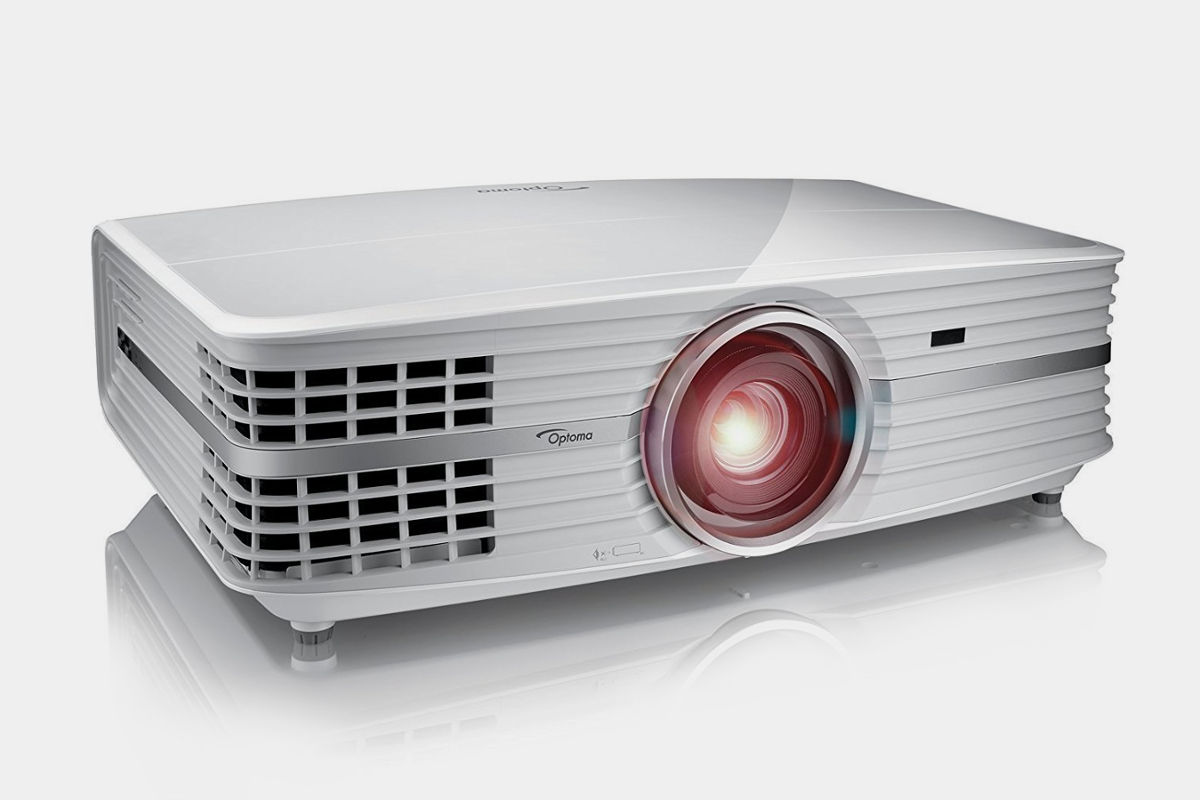 Optoma UHD60
Optoma UHD60
The Optoma UHD60 is another great option if you want a 4K projector for PS4 Pro or Xbox One X gaming but can’t afford to spend more than $2,000 on one. It sells for double the price of the ViewSonic product above, easily making it one of the most expensive items listed here.
Out of the box, this Optoma offering is impressive. It has good build quality, features multiple input options – including two HDMI ports – and boasts good out-of-box color accuracy. It supports HDR and has a high brightness rating of 3000 lumens, which is one of the highest among 4K projectors selling for less than $2,000. Moreover, it has a relatively quiet cooling fan and comes with a fairly decent internal audio.
Regarding input lag, the UHD60 is the least impressive among the projectors in this guide, with an input lag of 48 milliseconds, according to Optoma. If you usually play single-player games or slow-paced games like turn-based RPGs, the UHD60’s input lag won’t be that big of a deal. But if you are into fast-paced competitive games, this 4K projector is not the best option.
For a great home theatre experience, check out our selection of the top home theatre projectors in 1080p and 4k.
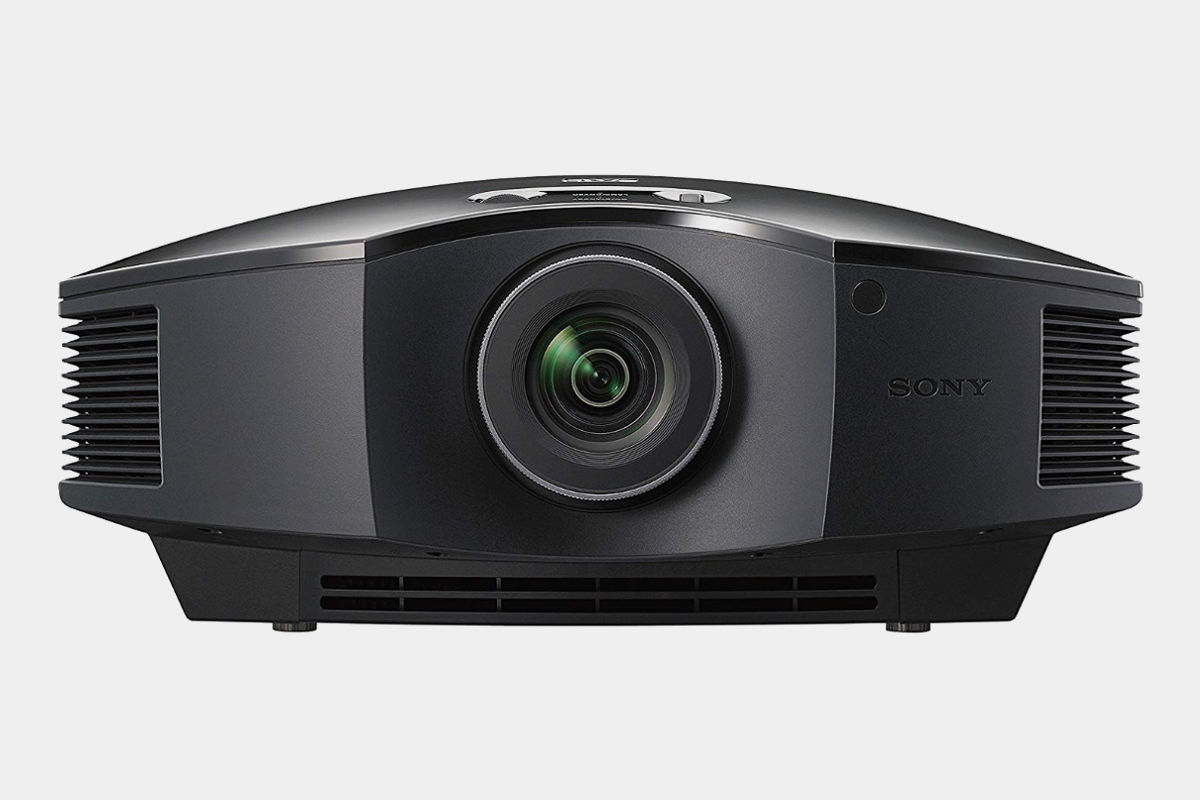 Sony VPLHW45ES
Sony VPLHW45ES
The Sony VPLHW45ES is a high-end projector that sells for almost $2,000, boasting excellent picture quality and a low input lag for gaming. It’s a 1080p projector best suited in a low-light setting and works great not only for gaming but also for watching movies and sports. It’s easy to set up out of the box and is notable for its very quiet cooling fan, which is barely noticeable even when you are sitting close to the projector.
Of the products in this guide, the VPLHW45ES easily stands out due to its sleek design, featuring a handsome black chassis with a front-facing fan and dual HDMI ports. It’s a well-built unit that weighs about 20 pounds, which makes it one of the heaviest projectors on this list. The connection ports are easy to access while the control buttons are responsive.
A standard throw projector, this expensive Sony projector can produce a 100-inch display from 12 feet, which is great if you have a spacious entertainment room. While not on the same level as the other 1080p projectors above, it still boasts a low input lag, registering a 22-millisecond input lag when game mode is enabled. When game mode is off, the input lag is very high and is not suitable even for casual gaming.
Our guide to the top-rated star projectors offers more amazing devices. Check them out.
Buyer’s Guidelines
Just like with TVs and monitors, there are a number of things you need to consider when shopping for gaming projectors, such as the native resolution and the input lag. Below are quick pointers when analyzing the specs sheet of projectors.
Throw Type
When it comes to projectors, one of the first and most important things you need to consider is the throw type. Long throw projectors (also often referred to as standard or normal throw projectors) can produce a 100-inch display usually from around 10 feet. They are widely available, not to mention they are usually more affordable than short throw and ultra-short throw projectors. They are most suitable if you have a spacious entertainment room.
As their names suggest, short throw and ultra-short throw projectors can produce a 100-inch display from much shorter distances – around 3-5 feet for the former and less than 3 feet for the latter – which makes them more ideal if you have limited space for your gaming setup. They are generally more expensive than long throw projectors, though, especially ultra-short throw projectors.
Resolution
Whether you game on PC or current-gen home consoles, the absolute minimum resolution you should consider is 1920×1080, or Full HD. A 1280×720 resolution is fine if you will mostly game on last-gen consoles like the PS3 and Xbox 360. But if you game on PC, PS4, PS4 Pro, Xbox One, Xbox One X, or Nintendo Switch, you shouldn’t consider anything lower than 1080p.
While 4K projectors are great if you own a powerful gaming PC, PS4 Pro, or Xbox One X, they are very expensive, with good “budget” options selling for about a grand, not to mention they usually have a high input lag. But if you want a more futureproof setup and can afford one, then go for a 4K projector, which is excellent for games with pretty graphics.
Brightness
If you will mostly play games in a dedicated entertainment room with controlled lighting, a gaming projector with a brightness rating of around 2000 lumens is more than good enough. If you prefer to game in a bright room, you’ll want a unit with at least 2500 lumens for clearer images.
If, however, you want a projector that’s also great for nighttime outdoor use – whether it’s for Madden NFL local multiplayer sessions with your friends or movie nights with your family – then you might want to look into the best outdoor projectors, which offer a very high brightness rating.
Input Lag
Input lag is the time it takes for the game to “react” to your button input. It’s measured in milliseconds and is one of the most important specs to look for when shopping for gaming projectors. Compared to gaming monitors, projectors have a higher input lag, with some models registering an input lag well above 50 milliseconds, which will make high-level competitive gamers cringe.
The good news is that there are also projectors with a low input lag, with some of the best ones offering an input lag of around 16 milliseconds when in gaming mode. For regular gaming, an input lag of around 30-40 milliseconds is good enough for most people. If you really want to use your projector for fast-paced competitive games like Battlefield 1, the only projectors you should consider are those with an input lag lower than 20 milliseconds.
Connectivity
If you plan to use your projector exclusively for console gaming, the most important input port you need to look for is HDMI. Fortunately, most projectors now come with at least one HDMI, so the chances of you accidentally buying an HDMI-less projector are extremely low. For a PC, you can also connect via HDMI, though some projectors also offer a few legacy ports for older computers.
Speakers
Like monitor speakers, built-in projector speakers are not that great, even those found in extremely expensive high-end models, so don’t make a decision based solely on the audio output. It’s the last thing you need to worry about. For gaming, it’s still much better to use good-sounding external speakers, especially if you love to play games with an excellent soundtrack, such as Nier: Automata, Persona 5, Transistor, and Cuphead.
